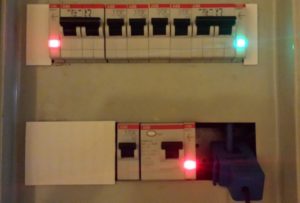A non invasive current sensor is connected to the spark core (with a few components), and clamped around a cable in the Mains distribution unit. No wiring is required, however Do not try this at home, as the Mains Distribution Unit should not be tampered with unless one is Licensed to do so.
The back end is Web Application hosted on a LAMP (Linux Apache MySql PHP) setup. Initially it was hosted on a raspberry pi on a LAN, but then I decided to host it on a hosted server. Both instances worked well, its just a matter of preference.
The spark core simply takes periodic readings and sends them to the server, where all of the calculations and filtering is done.

